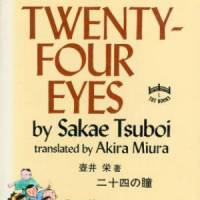Any list of Japan's top 10 films invariably includes the 1954 movie version of "Twenty-four Eyes," directed by Keisuke Kinoshita and starring Hideko Takamine in one of her signature roles as schoolteacher Hisako Oishi.
Twenty-four Eyes, by Sakae Tsuboi, Translated by Akira Miura.
256 pages
TUTTLE, Fiction.
The novel is a rather unassuming little volume compared to the classic movie it inspired, but its themes are universal. The story is set on the island of Shodoshima in the Seto Inland Sea, where the rookie teacher meets her 12 first-grade charges — the inspiration for the book's title — at a village school in 1928. The first half moves at a leisurely pace, dealing with the minutiae of childhood in one of Japan's more picturesque but impoverished regions.
But events in the outside world eventually catch up. The children's lives diverge after elementary school, as gender and economics decide their futures. Whenever possible, Hisako continues to counsel and encourage her former charges but, with the rise of nationalism and World War II, she has to hide her pacifist convictions.
The story closes in 1946, when the students plan a party for Hisako, now a war widow raising sons. The remaining students, some now parents themselves, reminisce while accepting their fates.
Frequent jumps in the timeline and the large ensemble of characters can occasionally be confusing, but Tsuboi's quiet commentary on the inhumanity of war stands up.
Read archived reviews of Japanese classics at jtimes.jp/essential.


















With your current subscription plan you can comment on stories. However, before writing your first comment, please create a display name in the Profile section of your subscriber account page.